Anand's Google Nexus One Review
by Anand Lal Shimpi on April 3, 2010 3:40 AM EST- Posted in
- Smartphones
- Mobile
It’s Mac vs. PC All Over Again
Until Windows Phone 7 arrives, Palm fixes its issues or MeeGo starts shipping in earnest, the inevitable comparison is between Android and the iPhone OS. And in my weeks of using Google’s Nexus One, I can honestly say that the differences really boil down to much of the same things that separate PC and Mac users.
The Mac vs. PC analogy starts as soon as you look at the unlock screen for the phone. Here’s what you see on Apple’s iPhone vs. Google’s Android:
|
Google Nexus One
|
Apple iPhone 3GS
|
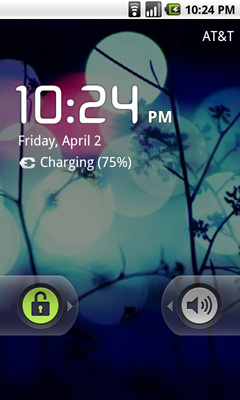 |
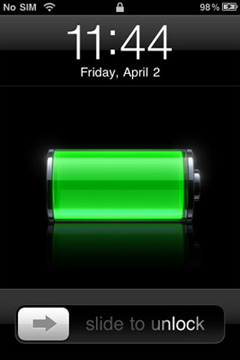 |
The iPhone allows for a single interaction: unlock the phone. The Nexus One gives you two: unlock or toggle sound on/off. The divergence continues once you unlock the phones:
|
Google Nexus One
|
Apple iPhone 3GS
|
 |
|
Apple’s home screen is a structured list of icons. Each swipe reveals another page that looks the same. You can customize placement of the app icons, and control what appears in the bottom row of four, but ultimately you’re flipping through a virtual index of your applications.
The Nexus One’s home screen is much more configurable/versatile. You start out with a u-shaped arrangement of icons. At the top, a Google search widget. Your home screen starts in the middle, you can swipe two screens to the right or left. On the iPhone you’re basically reading a book, on the Nexus One you’re navigating a field.
Swipe right to left and you’ll see a Gmail and Gtalk icon. Swipe left to right instead and you’ll see a weather widget and some more icons. The weather widget tells you the weather wherever you’re currently located (GPS/cellular network triangulation ftw) as well as gives you the latest news headlines all updated in real time.
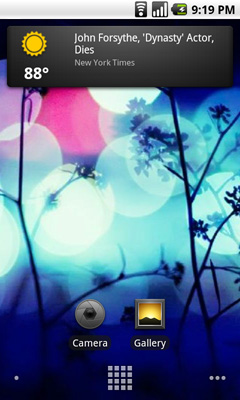 |
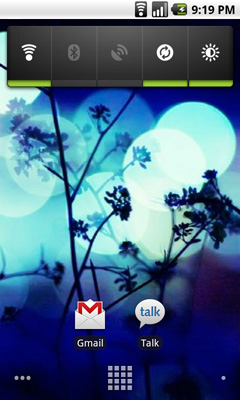 |
Apple’s predictable UI allows no room for quick ways to disable things like Bluetooth or 3G. The Nexus One ships with a Power widget that lets you quickly toggle WiFi, Bluetooth, GPS, auto syncing and auto brightness control. The only thing that’s missing is a quick way to disable 3G.
The remaining pages ship barren. It’s up to you to add items to them. You can do so by hitting the Nexus One’s contextual menu button and then clicking Add. You can add shortcuts to applications or interactive widgets. On the iPhone the only way you get something onto one of the home screens is by downloading/installing the app. There are no widgets, no concept of shortcuts, Apple abstracts all of this from the underlying software. As far as the user is concerned you install apps to the home screen and that’s how you access them. That’s your file system. Point, touch, access.
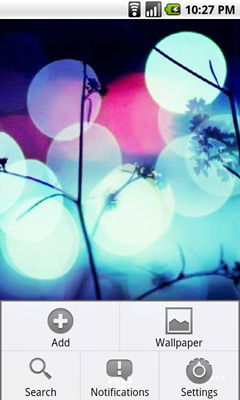 |
 |
In Android it’s all a little less abstracted. Your home screens are like virtual desktops. True, you don’t run applications on them, but the widgets are similar enough. You create shortcuts to applications for easy access. If you want a list of all of the apps on your phone, just click the virtual button at the bottom of your home screen:
This is more of the traditional iPhone presentation, except instead of swiping to see more pages of apps you scroll down. As you scroll the vanishing list wraps around an imaginary cube to give the UI more depth.
|
Google Nexus One
|
Apple iPhone 3GS
|
 |
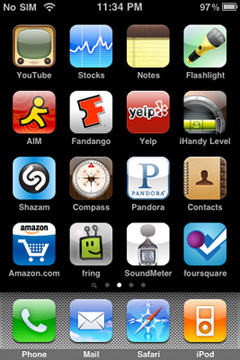 |
The fundamental difference in approach to UI really shows how Google and Apple view the smartphone. Apple views it as a passive extension to the desktop/notebook. You use it when you want to make a call or quickly access a program or application. Your primary sources of information consumption are in other forms (e.g. desktop, notebook, tablet).
Google’s view is a bit more ambitious. Not having a desktop/notebook platform (yet) to rely on, Android’s role is understandably more pronounced. You get more customization and personalization options. The focus isn’t on simplicity, but rather customizable functionality. The sort of flexibility you’d expect out of a larger computing device, but on your smartphone. Again, it makes sense because Google doesn’t currently offer a larger computing device.
Those who cried foul when Apple tied everyone’s hands with the iPhone OS, those who listed everything that Windows Mobile could do that Apple couldn’t, if you are one of these people then Android is a far more natural fit. Those who wanted the focused simplicity the iPhone offered on the other hand, will probably feel a bit uncomfortable with Android.


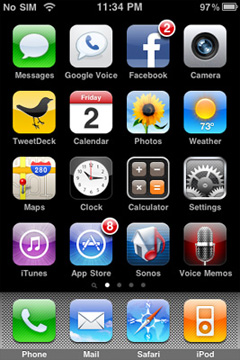








95 Comments
View All Comments
xtremevarun - Saturday, April 3, 2010 - link
Reviews of Nexus One on other sites were not as comprehensive as on Anandtech. You guys really explored all the features. Apple needs to do a major refresh to iPhone. And I do see Android becoming a major, major OS for phones if it's not already. WinMo7 also looks great. Good that competition is hotting up against the iPhone.xxNIBxx - Saturday, April 3, 2010 - link
What about Samsung's Bada OS? Samsung Wave s8500 beats the living crap out of all those Snapdragon devices. Also Samsung will release i9000 Galaxy S, which has pretty much the same hardware as with s8500, except it runs Android. Hardware wise, these 2 are the best phones in the world. Snapdragon is old news.Iphone 4g, which will come out in 2 months, will most likely use apple's a4, which from what i hear, is probably identical to samsung's 1ghz cpu(same cpu/gpu)/
sprockkets - Saturday, April 3, 2010 - link
If you receive a call over BT, does it1. Play the ringtone over the headset?
2. Play it on the headset only or both the speaker and headset?
3. Announce CID over the headset or even just the speaker?
sushantsharma - Saturday, April 3, 2010 - link
Looks OK! But usability should not go for a toss! Or I am missing it and it is there?Chloiber - Saturday, April 3, 2010 - link
"It's got a Qualcomm Snapdragon QSD8650 SoC"Thought the Nexus One (and the HTC Desire) use a Snapdragon QSD8250?!
Anand Lal Shimpi - Saturday, April 3, 2010 - link
You are correct :) Fixed!Take care,
Anand
Karl Brown - Saturday, April 3, 2010 - link
I will be receiving my Sony X10 on Tuesday.I hope the Sony will offer enough of the Nexus One's functionality to not make me regret not waiting longer for the Nexus One to become available in the UK.
jasperjones - Saturday, April 3, 2010 - link
Thanks for the very thorough review. The one area were the review lacks depth is audio and video playback and syncing. Differences in this area are striking imo:1.) If you don't use iTunes as an iPhone owner, you're pretty much SOL. The Nexus One I could sync with iTunes using DoubleTwist. But I don't like iTunes. I can just use Explorer or Windows Media Player or Songbird (1.7 beta) to sync instead. The latest Songbird builds do an amazing job (they even converts WAV and FLAC files on-the-fly).
2.) Formats. I like that the the Nexus One supports OGG. FLAC support is coming (AFAIK it got added to trunk some time ago--idk if users will see it in FroYo or Gingerbread) Plus the Nexus One gives me everything the iPhone has (including M4A).
3.) The media player. I hate to admit it as a current Nexus One and previous iPhone owner, but here the iPhone with its iPod app wins hands down. The UI of the iPod app is infinitely more intuitive, whereas things such as playlist generation are a pain on Android (everything takes far too many clicks).
Because of 3.), I think the overall win in this category goes to the iPhone.
bstewart - Saturday, April 3, 2010 - link
Outstanding review - really enjoyed your detailed assessment of the Nexus one compared to the IPone and Palm Pre. I have read a number of reviews on the Nexus one lately determining if it is the right device for me or not. After reading this review I am certainly more inclined to purchase it than before; especially based on it's pros and cons versus the IPhone. Thanks!Brian
cj100570 - Saturday, April 3, 2010 - link
All in all I'm not feeling this review. There was way to much time spent comparing the Nexus to the iPhone. And your complaints about the notification system used by Android is just asinine. I'm the former owner of both an original and 3G iPhone and Android simply puts the iPhone OS to shame. The iPhone had it's 15 minutes of fame but it's time to face facts that Apples way of doing things is the biggest problem the iPhone has. As a smartphone it is a #FAIL. Sure it sells well but the honest truth is that most people buy it because it's an Apple product and because of all the apps, 80% useless, that Apple and AT&T trot out as the big selling point.